Do you have a question about the Gigabyte B560 AORUS PRO AX and is the answer not in the manual?
Precautions to take before and during motherboard installation to prevent damage.
Detailed specifications of the B560 AORUS PRO AX motherboard components and features.
Details on PCI Express and M.2 slots for expansion cards and storage.
Information on SATA and M.2 storage connectors and their configurations.
Details on USB ports and headers, including Type-C and Gen 1/Gen 2.
Description of various internal motherboard connectors for system components.
Detailed description and pinouts for each back panel connector.
Features for monitoring system status and accessing BIOS information.
Overview of GIGABYTE's unique software features like APP Center and EasyTune.
List of bundled software, OS support, and motherboard form factor details.
Step-by-step guide and precautions for installing the CPU onto the motherboard.
Instructions and guidelines for installing RAM modules into the motherboard slots.
Explanation of dual channel memory configuration and recommended setups.
Guidelines for safely installing expansion cards like graphics or network cards.
Detailed description and pinouts for each back panel connector.
Details on HDMI, USB ports, LAN, and various audio jacks on the motherboard.
Table detailing audio jack usage for different channel configurations.
Detailed diagram and list of all internal motherboard connectors and their functions.
Explanation of ATX 12V power connectors and their pinouts.
Details on CPU_FAN, SYS_FAN, and CPU_OPT fan headers and their functions.
Pinouts and usage for addressable and RGB LED strip headers.
Details on SATA 6Gb/s connectors and M.2 Socket 3 connector installation.
Notices regarding bandwidth sharing and availability between M.2, SATA, and PCIEX4 slots.
Pinouts for front panel headers for buttons, LEDs, and audio jacks.
Details on S/PDIF Out header and USB Type-C/USB 3.2 Gen 1 headers.
Pinouts for USB 2.0/1.1 headers and connectors for Thunderbolt add-in cards.
Instructions for Q-Flash Plus BIOS updates and clearing CMOS settings.
Information about the CMOS battery, its function, and replacement procedures.
Explanation of status LEDs for CPU, DRAM, VGA, and boot process diagnostics.
Description of the initial BIOS startup screen and available function keys.
Overview of the main BIOS interface, setup menus, and advanced mode function keys.
Guide to using Smart Fan 6 for monitoring temperatures and controlling fan speeds.
Settings for fan operating modes, fail warnings, and profile management.
How to use the Favorites feature to quickly access frequently used BIOS options.
Settings for CPU clock ratios, voltages, and other performance-related configurations.
Adjusting CPU thermal protection, core ratios, and Hyper-Threading settings.
Configuring CPU power states, turbo ratios, and power limit settings.
Enabling XMP profiles and adjusting system memory multiplier for optimal performance.
Fine-tuning memory timings, channels, and adjusting CPU/memory voltages.
Configuring Load-Line Calibration, over-voltage, and over-current protection.
Configuration options for platform power management, keyboard/mouse power-on.
Settings for ErP, AC power loss behavior, and system resume options.
Configuring onboard graphics, LAN, audio, and other I/O devices.
Settings for USB support, XHCI hand-off, and network stack booting.
Configuration for SATA controllers, NVMe, Intel Ethernet, and system LEDs.
Settings for PXE boot, SATA/RST, and miscellaneous system configurations.
Viewing system information and accessing BIOS utilities like Q-Flash.
Options for boot order, fast boot, CSM support, and security settings.
Configuring VGA, USB, PS/2, network boot, and CSM support for compatibility.
Setting administrator/user passwords and selecting preferred BIOS boot mode.
Options for saving changes, exiting, loading defaults, and managing BIOS profiles.
Guide for installing Intel Optane Memory and the Storage Management application.
Instructions for installing motherboard drivers and GIGABYTE applications via APP Center.
EU CE declaration of conformity statements for various directives.
Statement regarding compliance with the European Community Radio Equipment Directive.
Precautions to take before and during motherboard installation to prevent damage.
Detailed specifications of the B560 AORUS PRO AX motherboard components and features.
Details on PCI Express and M.2 slots for expansion cards and storage.
Information on SATA and M.2 storage connectors and their configurations.
Details on USB ports and headers, including Type-C and Gen 1/Gen 2.
Description of various internal motherboard connectors for system components.
Detailed description and pinouts for each back panel connector.
Features for monitoring system status and accessing BIOS information.
Overview of GIGABYTE's unique software features like APP Center and EasyTune.
List of bundled software, OS support, and motherboard form factor details.
Step-by-step guide and precautions for installing the CPU onto the motherboard.
Instructions and guidelines for installing RAM modules into the motherboard slots.
Explanation of dual channel memory configuration and recommended setups.
Guidelines for safely installing expansion cards like graphics or network cards.
Detailed description and pinouts for each back panel connector.
Details on HDMI, USB ports, LAN, and various audio jacks on the motherboard.
Table detailing audio jack usage for different channel configurations.
Detailed diagram and list of all internal motherboard connectors and their functions.
Explanation of ATX 12V power connectors and their pinouts.
Details on CPU_FAN, SYS_FAN, and CPU_OPT fan headers and their functions.
Pinouts and usage for addressable and RGB LED strip headers.
Details on SATA 6Gb/s connectors and M.2 Socket 3 connector installation.
Notices regarding bandwidth sharing and availability between M.2, SATA, and PCIEX4 slots.
Pinouts for front panel headers for buttons, LEDs, and audio jacks.
Details on S/PDIF Out header and USB Type-C/USB 3.2 Gen 1 headers.
Pinouts for USB 2.0/1.1 headers and connectors for Thunderbolt add-in cards.
Instructions for Q-Flash Plus BIOS updates and clearing CMOS settings.
Information about the CMOS battery, its function, and replacement procedures.
Explanation of status LEDs for CPU, DRAM, VGA, and boot process diagnostics.
Description of the initial BIOS startup screen and available function keys.
Overview of the main BIOS interface, setup menus, and advanced mode function keys.
Guide to using Smart Fan 6 for monitoring temperatures and controlling fan speeds.
Settings for fan operating modes, fail warnings, and profile management.
How to use the Favorites feature to quickly access frequently used BIOS options.
Settings for CPU clock ratios, voltages, and other performance-related configurations.
Adjusting CPU thermal protection, core ratios, and Hyper-Threading settings.
Configuring CPU power states, turbo ratios, and power limit settings.
Enabling XMP profiles and adjusting system memory multiplier for optimal performance.
Fine-tuning memory timings, channels, and adjusting CPU/memory voltages.
Configuring Load-Line Calibration, over-voltage, and over-current protection.
Configuration options for platform power management, keyboard/mouse power-on.
Settings for ErP, AC power loss behavior, and system resume options.
Configuring onboard graphics, LAN, audio, and other I/O devices.
Settings for USB support, XHCI hand-off, and network stack booting.
Configuration for SATA controllers, NVMe, Intel Ethernet, and system LEDs.
Settings for PXE boot, SATA/RST, and miscellaneous system configurations.
Viewing system information and accessing BIOS utilities like Q-Flash.
Options for boot order, fast boot, CSM support, and security settings.
Configuring VGA, USB, PS/2, network boot, and CSM support for compatibility.
Setting administrator/user passwords and selecting preferred BIOS boot mode.
Options for saving changes, exiting, loading defaults, and managing BIOS profiles.
Guide for installing Intel Optane Memory and the Storage Management application.
Instructions for installing motherboard drivers and GIGABYTE applications via APP Center.
EU CE declaration of conformity statements for various directives.
Statement regarding compliance with the European Community Radio Equipment Directive.
| Processor socket | LGA 1200 (Socket H5) |
|---|---|
| Processor manufacturer | Intel |
| Compatible processor series | Intel Core i3, Intel Core i5, Intel Core i7, Intel Core i9 |
| Audio chip | Realtek ALC4080 |
| Component for | PC |
| Motherboard chipset | Intel B560 |
| Audio output channels | 7.1 channels |
| Motherboard form factor | ATX |
| Windows operating systems supported | Windows 10 x64 |
| Non-ECC | Yes |
| Memory channels | Dual-channel |
| Memory slots type | DIMM |
| Number of memory slots | 4 |
| Supported memory types | DDR4-SDRAM |
| Maximum internal memory | 128 GB |
| Supported memory clock speeds | 2133, 2400, 2666, 2933, 3000, 3200 MHz |
| Wi-Fi standards | 802.11a, 802.11b, 802.11g, Wi-Fi 4 (802.11n), Wi-Fi 5 (802.11ac), Wi-Fi 6 (802.11ax) |
| Bluetooth version | 5.1 |
| Top Wi-Fi standard | Wi-Fi 6 (802.11ax) |
| WLAN controller model | Intel Wi-Fi 6 AX200 |
| Ethernet interface type | Gigabit Ethernet |
| PCI Express x16 slots | 3 |
| Parallel processing technology support | 2-Way CrossFireX, Quad-GPU CrossFireX |
| Number of SATA III connectors | 6 |
| Number of Parallel ATA connectors | 0 |
| USB 3.2 Gen 1 (3.1 Gen 1) connectors | 2 |
| Supported storage drive types | HDD & SSD |
| Supported storage drive interfaces | M.2, SATA III |
| BIOS type | UEFI AMI |
| ACPI version | 5.0 |
| BIOS memory size | 256 Mbit |
| Desktop Management Interface (DMI) version | 2.7 |
| PS/2 ports quantity | 1 |
| USB 2.0 ports quantity | USB 2.0 ports have a data transmission speed of 480 Mbps, and are backwards compatible with USB 1.1 ports. You can connect all kinds of peripheral devices to them. |
| Harmonized System (HS) code | 84733020 |
| Depth | 244 mm |
|---|---|
| Width | 305 mm |
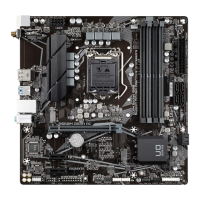
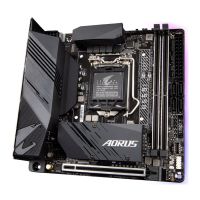
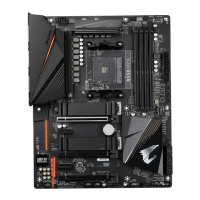
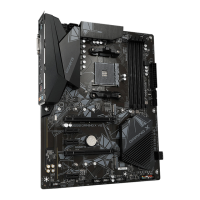
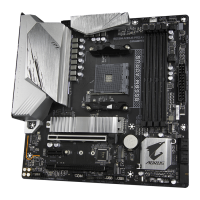
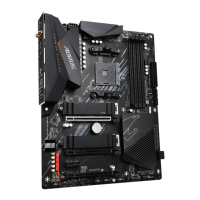
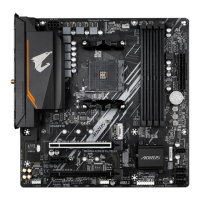
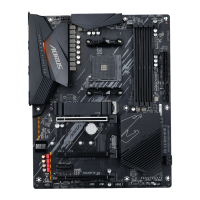

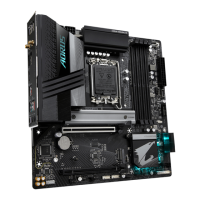
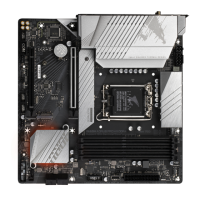
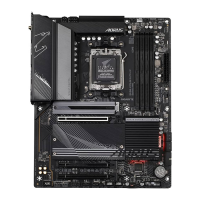
